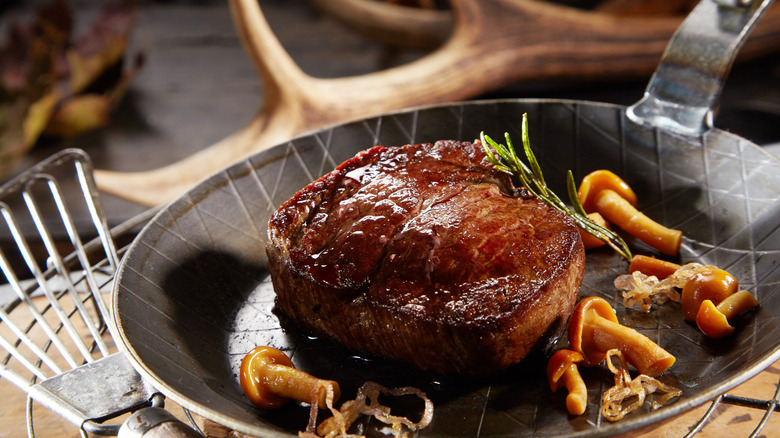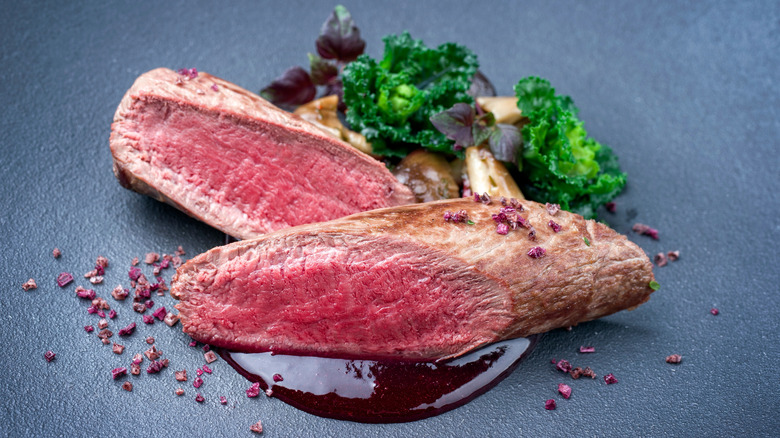Why You Want To Avoid Overcooking Venison
Depending on where you live, venison is either an expensive luxury you order in fine restaurants, or it is an everyday meat source. For example, if you live in a state with a high number of deer hunters (like Texas and Pennsylvania, per RealTree), you're more likely to have a neighbor or two with a separate deep freezer devoted to the pounds and pounds of deer meat they procure each year. Conversely, those states with low numbers of hunters (like Rhode Island and Delaware, for example) may consider venison a fancy and rare food item.
So, what exactly is this high brow/low brow meat? According to Merriam-Webster, venison is defined as the edible flesh of a game animal and especially a deer. It is considered a red meat that many describe as having a flavor similar to beef. Venison, though, is far leaner than beef and, arguably, much healthier. WebMD states that a three-ounce cut of venison has 134 calories and three grams of fat. The same size cut of beef has 259 calories with 18 grams of fat. Yes, it is possible to lighten up your fajitas without sacrificing the flavor! If you do find yourself with a stash of venison, whether you've hunted it yourself, been gifted some steaks from a friend who hunts, or splurge at a well-stocked market or online distributor, you're going to want to cook it perfectly to experience the best flavors of the meat. Rule number one: don't overcook it.
Mind your cooking time
Simply put, overcooking venison will result in a potentially rubbery piece of meat with a gamey flavor (via Southern Living). You may have already heard others describe venison and other hunted animals as "gamey" and wondered what it meant. It can mean a couple of things, according to the hunting blog Honest-Food. Most standard, store-bought meat has been fed a diet of corn which gives the meat a very mild flavor that most people are used to. Because wild game animals like deer subsist on a variety of things like acorns, herbs, and grasses, the flavor is richer and fuller, or a bit "gamey." This isn't necessarily bad, just different and quite pleasant for anyone who enjoys a flavorful piece of meat.
The negative kind of "gamey" can be described as sour, smelly, and pungent, notes Honest-Food. While this is often the result of poor meat handling, it can also be the result of a long and unnecessary cook time. Per Southern Living, naturally tender cuts of venison like loin and tenderloin are best when cooked to a maximum of medium rare. Though the Centers for Disease Control and Prevention suggests that hunters freeze venison first before preparing rare to medium rare meat in order to kill potential toxoplasmosis. Tougher muscles like the shoulder and neck are best when braised or stewed — think delicious venison chili on a cold evening. While cooking anything unfamiliar can be intimidating, just remember, venison is just another kind of meat and a tasty one at that. Educate yourself with some helpful tips, and get ready to up your kitchen game.

